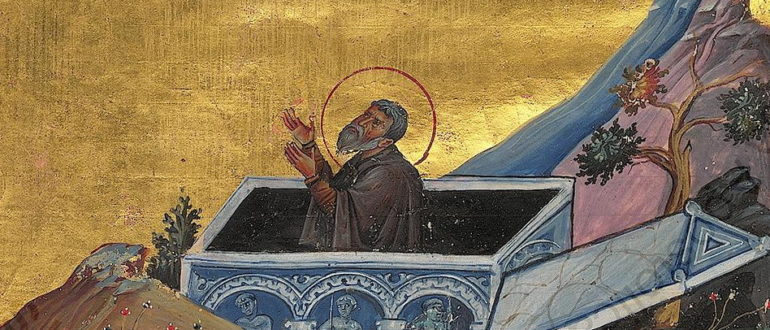
St. Leon Church "Sound of Children" Summer Camp Click Here to lean more

The feast of St. James of Nisibis (Մծբին/Mtsbin), one of the most popular saints in the Armenian Church, is celebrated on Saturday, December 14.
The Armenian Apostolic Church venerates saints as exemplary models of faith, virtue, and unwavering devotion to God, but does not worship them. Only Almighty God is worshipped, ultimate grace and salvation come solely from God. The saints are venerated for leading holy lives and are considered intercessors for the faithful. They are role models to 'Be holy, for I your God am holy' (Leviticus 11:44; I Peter 1:16).
By venerating saints, the faithful honor their witness to Christ and seek their prayers for guidance and strength. This practice reflects the Armenian Church's deep respect for the communion of saints, emphasizing their connection to the living body of Christ and their role in pointing believers toward God’s eternal love and mercy.
Who was St. James of Nisibis?
Saint Jacob of Nisibis, one of the beloved saints of the universal Church, is also known as the "Wonderworker" (Սքանչելագործ) due to the many miracles he performed. According to hagiographical sources, St. James belonged to the Parthian dynasty in the Persian Arsacid Empire and, from his mother’s side, was a relative of Saint Gregory the Illuminator, the patron saint of Armenia. When the family of Anak the Parthian was annihilated, James and his cousin Suren were rescued by their caretakers and taken to Caesarea, where they were raised in the Christian faith.
Many Armenian Churches are dedicated in his name as St. James; however, some suggest that the exact rendition of his name into English should be Jacob (Hagop) rather than James (Hagopos). In so doing there would be no confusion regarding the identity of other Saints revered by the Armenian Church who bear the same name.
There are two other apostolic saints with the name James, mentioned in the New Testament, whose double names are borne by the brotherhood and the monastic Order of St. James of the Armenian Patriarchate of Jerusalem. On of these, St. James (brother of the Evangelist John) known as “the Beheaded” (Գլխադիր) is the patron Saint of the monastery. The other St. James is known as “the Lord’s Brother” (Տեառնեղբայր), the first bishop of Jerusalem, who set the foundation of the Apostolic See of the Armenian Patriarchate of Jerusalem.
Even as the exact date of the birth and death of St. James of Mtsbin is not known, he lived in the 4th century. He was educated during his childhood with St. Gregory the Illuminator in Caesarea (of Cappadocia), the famous educational center of Asia Minor. Caesarea is adjacent to Armenia and is known as the Lesser Armenia (Փոքր Հայք).
St. James was consecrated a bishop for the See of Mtsbin in Mesopotamia by Melidios, the Archbishop of Antioch, in Amit (near Tikranakert) and became known as St. James of Mtsbin after the name of his Episcopal See. He was one of the 318 participant Bishops of the First Ecumenical Council of Nicaea in 325 A.D. Today, Nisibis or Nusaybin is a city in Mardin Province, Turkey.
St. James of Mtsbin became renowned for his virtuous and ascetic life, gaining fame for his miraculous "wonderworking" powers. Among the many stories about him, the most famous is the legend of his attempt to climb Mt. Ararat in search of Noah’s Ark. According to tradition, despite his old age, St. James embarked on the arduous climb but grew weary and fell asleep. In a dream, an angel appeared, telling him the ascent was impossible but, in recognition of his faith, gave him a piece of Noah’s Ark. Content, St. James returned home with the sacred relic. According to tradition, the fragment of Noah’s Ark gifted to St. James is preserved at the Holy See of Etchmiadzin.
St. James is credited with several doctrinal and spiritual writings. In his honor, St. Gregory of Narek composed a profound oration, and the 12th-century poet Catholicos St. Nerses the Graceful wrote the feast-day hymn “Victorious and Holy Father”. His feast day is shared with Saints Maroukeh and St. Melidos. It marks a festive occasion for churches named after him and for those bearing the name Hagop (James or Jacob).